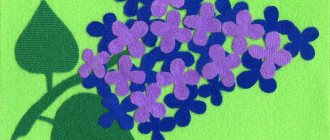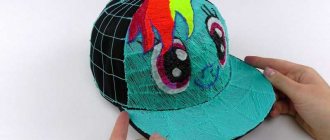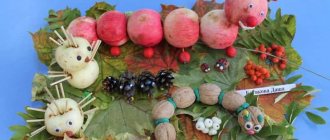Using the kanzashi technique, you can make not only spectacular DIY jewelry from satin ribbons, but also delightful paintings and panels. Basically, such canvases consist of a variety of colors. The most popular are, of course, roses. Looking at such works, one gets the impression that we seem to be drawing with ribbons.
Materials and tools
For anyone who plans to start practicing the kanzashi technique, you need to stock up on a standard set of materials and tools:
- Tapes;
- Beads, beads, buttons, bead huggers and others;
- Lighter, thermal knife or candles;
- Scissors;
- Ruler or centimeter;
- Needle;
- Threads;
- Glue (it is advisable to take a glue gun);
- Tweezers.
Flowers using kanzashi technique for boxes
The box is made very easily and quickly. You can make a box from the simplest and closest materials. For example, you can use a small box, glue a couple of sides and press the lid to them. The box is ready and can be decorated with flowers in the kanzashi style.
The best option is to draw multi-colored patterns and glue a kanzashi flower to the lid. In the same way, glue several identical colors on the sides and add some beads or seed beads. The box will take on a completely different look and will only become more beautiful.
If you don’t have a box on hand, you can use any jar with a lid. In the same order, you need to decorate the jar with glass paints and carefully glue kanzashi flowers. It is advisable to glue a small flower to the lid, because the lid from under the jar will have to be unscrewed.
How to choose the right ribbons
Satin ribbons are used for Japanese handicrafts. They come in different widths: 2.5 cm, 5 cm, etc. Beginners are recommended to start making the first petals with ribbons, the width of which is 5 cm. It is very convenient to fold the squares needed for the petals from them. However, the components of a flower are not always the same in size, so several ribbons of different sizes are used to create more complex flowers. The narrowest ribbons are used to create a background or additional decor, if we are talking about, say, wall panels.
The photo below shows examples of kanzashi bows and flowers.
- Satin ribbons have a very beautiful appearance and are pleasant to the touch.
- They are usually made from silk, and some ribbons are even decorated with patterns or prints.
- However, even such an impeccable and attention-grabbing material has one significant drawback - the edge of the cut is very loose.
- Therefore, if you do not burn the tip of the ribbon in time, it threatens to unravel.
- Also, this is a very slippery material and it will be difficult for untrained hands to hold the smooth petals at first.
Alternatively, it is better for beginners to start with grosgrain ribbons.
What stitches are used in ribbon embroidery
In ribbon embroidery there are stitches and knots - colonial and French . The second one is used more often, since only with its help can you display any detail without resorting to other stitches.
How to make a French knot :
- Thread a ribbon no longer than 40 cm into the needle.
- Pierce the fabric and bring the thread to the right side.
- Holding the ribbon taut with your left hand, bring the needle under it and make one twist around the needle.
- Insert the needle into the fabric next to the previous puncture and bring it out to the wrong side, continuing to hold the tape taut with your left hand.
This is a regular French knot. To make a knot on a leg, the second puncture after entwining is made not next to the previous one, but at a certain distance, which will be that same leg.
The colonial knot is performed in a more complex way, but it looks more prominent on the fabric and can create the effect of a play of shadows. It's worth mastering.
Making a colonial knot in ribbon embroidery:
- Pierce the fabric and bring the needle to the face.
- Holding the ribbon with your left hand, move the needle to the left of the thread; one yarn over will appear on it, which you need to press with your index finger.
- Next, holding the yarn over, another twist is made on top of the needle with your right hand.
- Insert the needle into the fabric and pull it out from the wrong side. You should get a voluminous knot.
In addition to relief nodes, simple stitches , for example, to fill distant areas of greenery, sky, ponds - everything that may be present in a landscape painting.
It is also recommended to use floss threads so that the ribbon sections differ from the background.
Which knot do you like best?
FrenchColonial
Adviсe
If you follow a number of tips, step-by-step making of kanzashkas with your own hands will become not only more comfortable, but also safer.
To do this, you need to adhere to some safety rules and keep your workplace in perfect order.
- First, pay more attention to lighting. Everyone knows that it is better to work with small details in the daytime, when you can get a sufficient amount of natural light. However, not every needlewoman can afford to carve out a few hours of free time in the middle of the working day. Therefore, she has no choice but to sit down to work late in the evening. Of course, table lamps cannot compare to sunlight, although if you try, you can minimize eye strain. Position the table lamp so that you can clearly see the tape and nothing obscures your work.
- Secondly, when dealing with fire or a thermal knife, take care in advance so that none of the household members inadvertently gets burned by them. In general, it is recommended to keep the lighter and candles as far as possible from the ribbons, since they tend to burn well and quickly.
- Thirdly, a properly organized workplace is the key to successful work. This rule applies not only to needlework and everything connected with it, but also to many other areas of our lives. However, many people neglect it, but in vain. Place only the essentials within reach; store other materials and tools in the designated place to avoid cluttering the table.
- Fourthly, complete beginners need to start their first creations, choosing darker and more saturated tapes as a basis. When you first try to twist and burn the petals, there is a high probability that in inexperienced hands the tape will become too smoked and darken in noticeable places.
- Fifthly, the ribbons should be cut in advance into pieces of equal sizes and their ends should be immediately singed.
What is needed to create a painting
To begin with, you need to decide what kind of ribbons the work will be done - silk or satin. Each variety has both pros and cons. Silk ones are made of natural material, and satin ones are made of synectics. That is why satin ones are considered a more budget option.
- wrinkle quickly;
- shed very often;
- fade when exposed to sunlight.
- durable;
- long service life;
- absorb moisture well.
The main element for embroidery is a needle. Simple sewing needles are not suitable in this case. When purchasing a needle, consider the following:
If you have chosen a complex design, it must be applied to the fabric before you begin the work. Buy a special marker for needlework. A simple marker can leave a mark on the canvas, so in this case its use is strictly prohibited.
- scissors;
- lighter;
- matches;
- pliers.
Kanzashi is an ancient Japanese type of needlework that appeared 400 years ago. Japanese women, who always knew a lot about style and charm, attached jewelry made of ribbons and beads to their hair. According to their belief, such things also drove away evil spirits. The article “Kanzashi technique for beginners with diagrams” will definitely be useful to needlewomen and will help them learn how to make original crafts.
Today, the kanzashi technique is actively used not only in creating jewelry, but also interior items. Panels and paintings with flowers made from ribbons are perfect for any interior. Also, such crafts will be a wonderful gift for family and friends.
The principle of creating a kanzashi flower
It is true that the only elements of this technique are the petals. Regardless of complexity, they are divided into two types - round and sharp.
Even from the simplest petals you can create simple and beautiful kanzashi for beginners.
The standard technique for creating a kanzashi flower consists of seven steps:
- The tape is cut into the required number of pieces of the same size.
- A petal is assembled from each piece, after which its tips and the junction are treated with fire.
- If you don’t have a lighter, take candles (you need to be extremely careful with them, otherwise you risk smoking the delicate material).
- All petals are collected using a needle and thread. The stronger the thread, the better.
- Such a blank is glued with a glue gun to a base, which can be made of felt or cardboard.
- A bead is sewn or glued to the center of the blank, which will become the core of the flower.
- The petals can be further decorated: coat the edges with glue and sprinkle with sparkles or sew on beads
- All that remains is to wait until the work is completely dry. Afterwards, you can do whatever your heart desires with the resulting flower.
No one should have any problems finding detailed instructions and diagrams on how to make kanzashi. Therefore, all that remains is to wish good luck to everyone in their endeavors.
Panel with roses
Another master class will show you the steps of creating with your own hands a wonderful panel with lush roses, which is suitable for a classic interior.
To create such a cute panel, prepare:
- Hoop frame;
- The material on which the roses will be placed;
- Satin or silk ribbons;
- A needle;
- Threads;
- Glue;
- Cardboard;
- Scissors;
- Decorative ribbon (can be replaced with a golden cord) to create a edging for the vase;
- Pins.
The master class for beginners begins with creating roses from satin ribbons. In total, you will need seven such elements for the panel.
Next, you need to fix the material that is taken as the basis on the frame. The frame itself can be placed on a pillow and using pins sequentially, one after another, attach roses with leaves to the material.
You can sew on all the created flowers and leaves in any order, as it will be convenient for you. This way you will receive your own original product. First, the leaves are fixed on the canvas, and then proceed to attaching the rose flowers. The last thing to make is the vase. For it, take a square template made from cardboard and wrap it with the selected material. You can also decorate the vase with a beautiful ribbon or golden cord. At the final stage, glue the vase under the roses. Thus, you will get a wonderful panel that is suitable for the interior of a living room or children's room.
Having examined all the stages of creating a painting from ribbons with your own hands, let’s consider how its main elements are created.
We draw flowers with ribbons. To create a rose from a satin ribbon, take a fifty-millimeter ribbon and make eight pieces of it 10.5 centimeters long, and nine pieces 11.5 centimeters long. Vary this amount at your own discretion. It all depends on how lush the flower you want to get. The borders of the ribbons must be melted using a lighter or matches. Having made the required number of segments, we move on to folding the bud.
Making a bud begins with the fact that you will need to bend the right edge of the ribbon and secure it with a pin. You can see how to do this correctly in the photo. Next, you need to bend these edges one more time and secure it with a thread in several folds.
The next step is to bend the top border of the ribbon and fold the bud. Secure the resulting part with thread. As a result, we prepare a bud for a rose, as in the photo. Next we draw the petals with ribbons. To do this, take the upper part and bend it 0.7 centimeters and pin it with a pin. Next, the corner of the satin ribbon is folded over and also pinned. We do the same with the second corner. Next, we take several layers of thread and baste the bottom edge with it. After which, the basting is pulled together.
Before sewing on the second petal, you need to pin it to the bud. This will help prevent it from moving. The borders of the petal are wrapped around the bud and secured with threads along the bottom.
After the second petal, we create the next one - the third in a row and fix it with a pin to the bud, after which it needs to be sewn.
We make all the other petals based on a similar scheme of actions. To make your rose look natural, use several shades of ribbon in your work. For example, make the petals inside the rose from a darker material. The finished buds can be further decorated by using beads. All that remains is to sew on the leaves from the green ribbon and the rose will be made.
Now, let's look at how the leaves for the panel are created. Prepare ribbons, threads, a needle, a lighter, scissors, a ruler, and a simple pencil for work. If possible, you can also use a thread threader.
It is also better to make leaves from satin ribbons of different tones and with different widths. They can be not only satin, but also nylon or organza. Choose any material at your discretion. Try each of the above materials and choose the option that is more convenient for you.
The rose leaves will have a pointed shape with ruffles. To do this, you need to take a ribbon whose width is five centimeters. Next, you need to take a ruler, measure eleven centimeters and cut them off. To avoid fraying of the tape edges, they must be singed. A lighter or a candle will help you do this. We just melt the edges over the tribe.
The resulting segment is bent in half, so that you can determine its center. Next, we bend the edges from the center to the bottom. There is a stitch on the bottom side. Please note that when stitching, you must grab all the tape layers with the needle.
Having laid the line, it must be pulled together. Pull the thread tightly enough, wrap it around the base of the sheet and secure.
Having made all the necessary preparations in this way, proceed to fixing the flowers on the panel. For a classic interior, such a picture is perfect.
We have considered several options on the basis of which we can make wonderful paintings using the kanzashi technique and panels with our own hands. For these products, everyone's favorite rose flowers were used using the kanzashi technique. In addition, there are many more colors made from satin ribbons that can be used to decorate such works. When working with such paintings, it’s as if we are painting with ribbons. Choose the appropriate master class for beginners, which is on our website, look for new ideas and create wonderful paintings in an interesting style for any interior.











